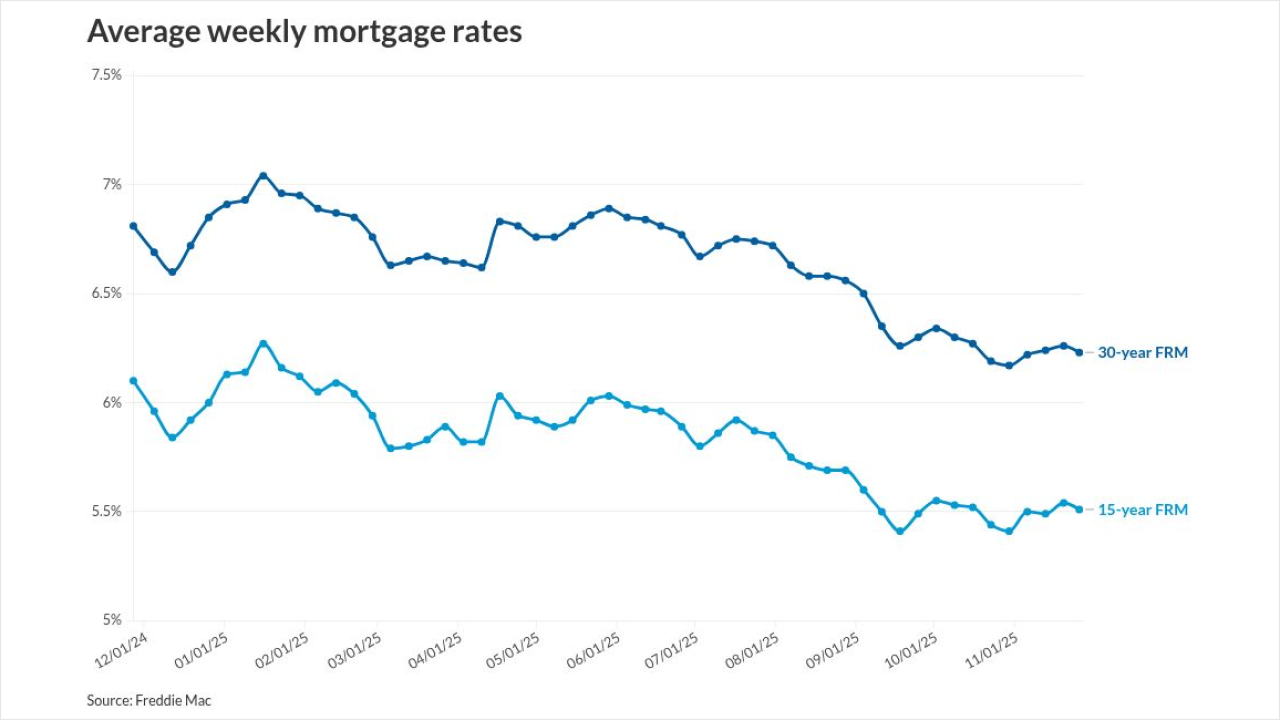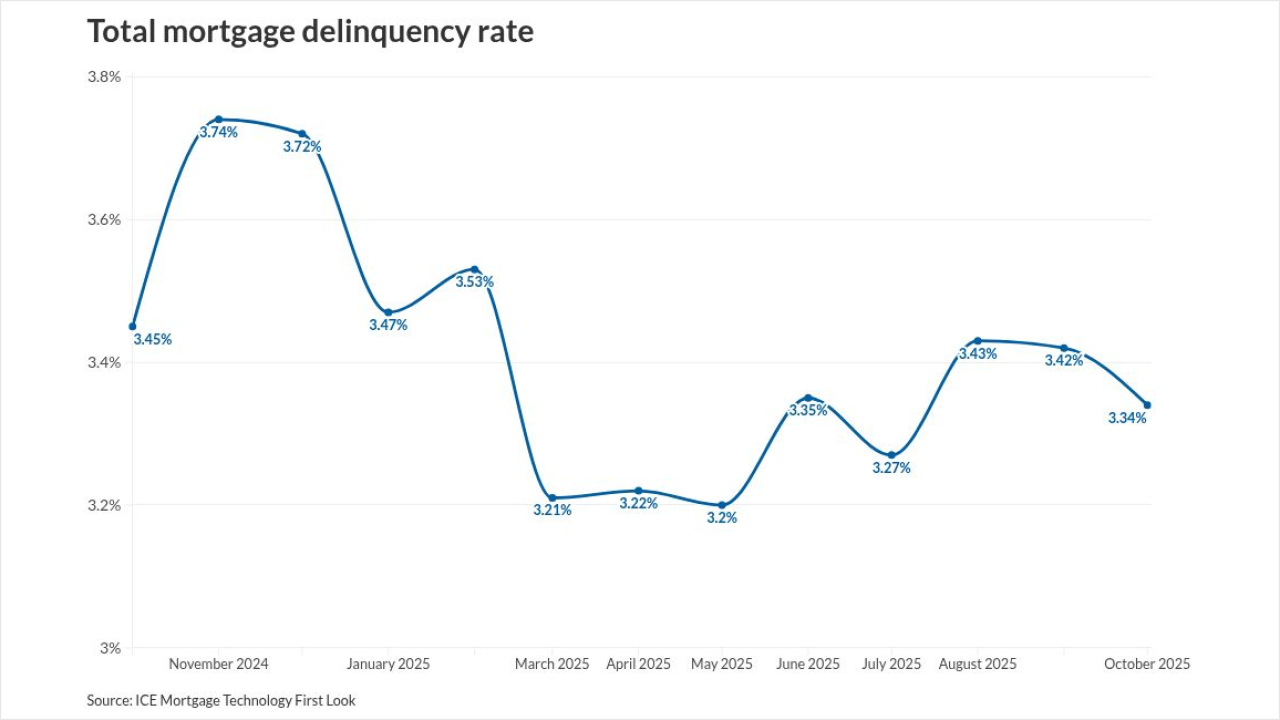Securitization volume in 2024 surpassed last year's volume, an unexpected outcome, given the challenges the market faced in 2023 and the year before. Yet the strong performance came into view as the year progressed.
Deal sponsors sold an estimated $488.2 billion in securitizations to investors in 2024 through mid-December, according to sectors tracked by the ASR Deal Database. That represented a massive 69.3% increase in business over last year, according to available numbers.
Participating sectors ranged from the perennial collateralized debt obligations (CDOs)--comprising mostly collateralized loan obligations (CLOs)--to consumer and esoteric asset-backed securities (ABS), to residential mortgage-backed securities (MBS) and commercial MBS. Whole business securitizations and maritime trade deals also contributed to the haul.

The 2024 total volume number compares to $288.3 billion issued in 2023, which was the second year of securitization market underperformance. Last year's volume was down 21.4% from 2022's $366.5 billion, which was a drop of 14.2% from 2021's $427 billion.
A resurgence in M&A and LBO activity after several slow years could generate new loan supply and collateral.
Despite a lackluster leveraged loan market, issuance of CDOs pooling corporate debt started 2024 at a record pace that hardly let up as the year progressed, with asset managers eager to invest in the securities offering a premium over comparably rated floating-rate debt. Refinancings and resets drove the record CLO issuance, which should continue into 2025, according to a December 23 report by S&P Global Ratings.
"We expect heavy CLO issuance for 2025," S&P says. "A resurgence in M&A and LBO activity after several slow years could generate new loan supply and collateral."
J.P. Morgan was the top lead manager on offerings. Bank of America, Citigroup, Barclays and Goldman Sachs followed, according to the database.

Auto continues to drive consumer ABS
Echoing 2023, auto ABS was a strong performer this year. KBRA forecasts 2024 volume reaching $160 billion, dwarfing other consumer ABS volumes, and increasing 14.8% from last year's $139.4 billion. The rating agency notes that much of the growth in the retail auto ABS sector stems from a handful of bank-run finance companies, especially Chase and Santander, and the entrance of Bridgecrest late in the year. Captive finance companies, including Honda, Toyota and Hyundai, also saw increases.
"We expect retail auto ABS volumes to rise in 2025, as the potential for lower interest rates and a healthy labor market should drive increased auto loan/lease originations next year," KBRA says, estimating an approximately 10% increase, to $175 billion.
RMBS volume in 2024 is expected to increase over 2023, driven in part by originations of non-agency mortgages that use alternative underwriting and credit evaluation processes. The Mortgage Bankers Association forecasts single-family mortgage originations increasing to $1.8 trillion, up from $1.6 trillion in 2023.
The Federal Reserve's Survey of Consumer Finances released in October found that self-employed workers constitute 10% of the labor force and earn 32% more than salaried workers. That resulted in a slew of RMBS deals this year that use alternative documentation reflecting the needs of those borrowers, recently exemplified by the $304 million offering by A&D Mortgage that securitized mortgages documented by banking statements, profit and loss statements, and debt service coverage ratios.
S&P said that it anticipates residential mortgage performance remaining stable in 2025, with some elevated delinquencies in more recent vintages continuing into the new year.
"Non-agency RMBS issuance will likely increase in 2025 as a forecasted decrease in the 30-year fixed-rate mortgage spurs purchases and refinance activity," the rating agency says.
CMBS also saw substantial issuance in 2024, despite high interest rates and lingering problems in the office commercial real estate sector. S&P forecast issuance increasing modestly in 2025 from this year, to $110 billion.
Credit card growth likely
S&P notes that elevated interest rates and inflation continue to impact consumers' purchasing power and contribute to lower savings rates, resulting in consumer credit outstanding continuing to hover over $1.3 trillion. Nevertheless, credit card ABS generally remains a stable asset class, the rating agency says, and delinquencies and charge-offs have normalized to pre-pandemic levels.
"Credit card issuers have managed risks with tighter underwriting and higher credit standards," S&P says. "We expect credit card ABS issuance of about $33 billion in 2025," up from $20 billion this year.
Student loan ABS issuance at $9.3 billion in 2024 increased from the previous year's $8.3 billion but is unlikely to change much in 2025, according to S&P. The rating agency expects the private student loan collateral pool losses to increase slightly next year, and delinquencies also to increase somewhat due to persistent inflation.
"Most legacy and post-financial crisis private student loan transaction ratings should remain stable," S&P says.
The aviation ABS sector improved in 2024 from a credit standpoint and ratings stability, according to KBRA, which resulted in just two downgrades this year compared to 19 in 2023, 34 in 2022, 47 in 2021, and 178 in 2020, when the pandemic all but halted airline flights.
"Today, sector headwinds have faded, and many deals are experiencing improved cash flow," KBA says. "Despite the recovery of cash flows in most deals, legacy aviation ABS transactions will likely remain under pressure next year, as it often takes a prolonged period for structures to stabilize after experiencing significant interest deferrals or falling considerably behind on scheduled principal payments."





